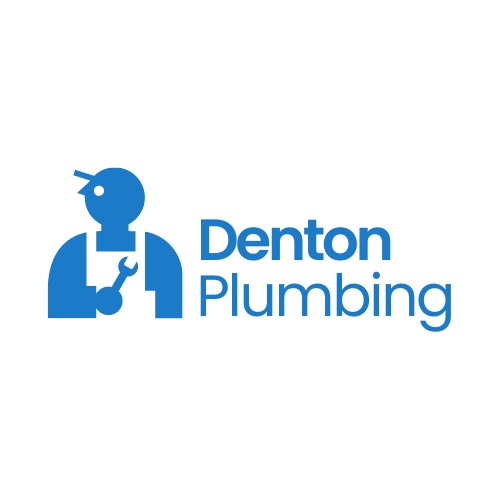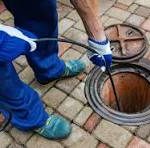Foreword:
Rust is one of the toughest enemies for construction and maintenance. It creeps in quietly, more often than not unnoticed until the damages set in and announce their presence. Rust is a threat for the pipes when it is more than an eyesore, transforming into a fatal danger in regards to structural support dislocation, efficiency impairments, and expensive repairs and replacements.
Here in such an informative narrative, we shall touch upon the importance of rust removal, its supplement by pressure washing, and how companies can further ensure their tenacity.
The Problem with Rust:
When moisture and traces of oxygen combine, an oxidation process develops that leads to corrosion of iron or steel, creating rust, over time. The mechanism whereby iron oxide eats away at the hydroxide layer is called oxidation. With the material starting to oxidize, the integrity of the metal is affected, and hence it gets severed or corroded. Pipes are especially at risk because they are generally open to fluctuating temperatures, high humidity, and direct water flow, all resulting in a favorable environment for the formation of rust.
If left unchecked, rust will:
- Reduce Pipe Efficiency: By narrowing the internal diameter of pipes, rust impedes the flow of water and increases pressure, potentially leading to bursts.
- Compromise Water Quality: If corroded, metals such as chromium and iron will leach into the water supply, endangering drinking and use.
- Add to the Maintenance Costs: In cases when this concept just becomes applicable for pipe rehabilitation, it can be catastrophically expensive to repair or replace corroded pipes as corrosion works its way further along the system.
- Endanger Structural Integrity: Rust can entirely destroy a system in industrial and construction settings, causing grave failures.
The Importance of Timely Rust Removal
In order to keep pipes functioning for an extended period of time, early removal of rust becomes indispensable. Periodic inspections and maintenance can pick up things that loosely knit rusty elements early enough for timely remedy. The procedure goes on to restore the original features of metal, hence stopping further damage.
Rust Removal Techniques
Chemical rust removal involves the applying of rust removers and inhibitors, which dissolve or neutralize rust that is already present. In many cases, chemical treatments are most appropriate for inaccessible areas in pipework requiring precision application. Unfortunately, this type of product requires great care.
- Mechanical Methods: These methods include sanding, wire-brushing, or grinding. These techniques, though laborious, are often unavoidable for deep cleaners.
- Pressure washing: Rust removal techniques can not only be efficient but also eco-friendly: pressure washing uses fast-moving water to blast away layers of rust without in any way affecting the integrity of the substrate underneath.
The Role of Pressure Washing in Rust Removal
Pressure washing has come to be a practical and efficacious means for the removal of rust and soil from any surface. Water sprayed at high velocities dislodges rust, dirt, and other impurities from the pipe surface. Adding any special rust removers available on the market makes it even more effective.
Advantages of Pressure Washing
- Non-Invasive: Pressure washing does not erode the underlying material, since it is non-abrasive in nature and thus able to keep the integrity of the pipe intact.
- Time Efficient: High-pressure jets can cover larger areas in an even smaller period so that the maintenance intervention minimizes the downtime.
- Environmentally Friendly: When combined with biodegradable solutions, pressure washing is invariably eco-friendly.
- Versatile Applications: They can be used on small residential plumbing in denton back to huge industrial pipelines.
Construction companies and maintenance teams often depend on pressure washing as a basic part of rust-removal strategy. Regularly scheduled maintenance keeps rust from becoming a more serious consideration.
Construction Companies and Rust Prevention
Construction companies are at the center of rust removal and prevention. They engage in work on designs for environment-resistant construction of pipelines and other metal structures and carry on through post-construction servicing.
Key strategies to prevent corrosion:
- Material-choice: The use of corrosion-resistant steel such as stainless or galvanized reduces the risk of rust conversion.
- Protective Coatings: Application of paints, sealant, or epoxy will create a space between the metal and corrosive agents.
- Proper Installation: Good installation practices and insulation of pipes from moisture areas can delay rust.
- Routine Maintenance: Inspection and cleaning help keep rust at bay and spot problems before they start.
Collaborative Efforts:
Many construction companies join forces with specialist maintenance companies to provide rust-removal and prevention services. Such cooperation is meant to ensure that pipelines, already built, can conform to limited standards and are serviceable for the rest of their intended lives.
Case Study: Rust Removal in Industrial Settings
Think of a large manufacturing plant handling many miles of piping to transport water and chemicals. The occurrence of rust in that environment can hamper operations, contaminate products, and create safety risks. The company was able to resurrect its entire piping system from the brink of extinction by operating the submarine correctly, playing safe; that is, employing pressure wash chemicals.
The same way through their maintenance schedules, they implemented a system to apply protective coatings in order to prevent future corrosion. This example serves best as a demonstration of the need for a multi-dimensional approach to rust management that encompasses both removal and prevention.
The Cost of Neglect
Neglecting corrosion prunes repairs is expensive. Here are some of the considerations in this regard:
- Downtime increase: Rust impairing the functionality of machinery and subsequently halting the operations could lead to a loss of production.
- More Dollar Signs: Rust damage usually does substantial damage and requires costly repairs or, unfortunately, even total replacement.
- Environmental damage: Rust may lead to leaking pipelines that can choke the soil and pollute the water table, making for a very expensive environmental cleanup.
- Safety: Corroded pipes are more susceptible to breaking or bursting, and hence pose a greater threat to workers and communities nearby.
Conclusion:
The rust business of pipelines need not be looked at in any alarming manner. If only preventive measures to remove and avoid corrosion are taken with reasonable diligence, most pipes can live long and fruitful lives. Pressure washing remains one of the best ways to remove rust from a host of building materials: it offers construction companies and maintenance teams a reliable tool against corrosion.
With investment in the best materials, safety, and maintenance, a construction company can build systems that stand the test of time. After construction, it is worth keeping in mind to involve the entire property, including property owners and facility managers, in the medical aspect of such facilities.
A rust problem is not just a maintenance issue; dealing with it has a direct impact on safety, efficiency, and long-term economic savings. Invest today to safeguard your infrastructure from the sorry consequences of neglect tomorrow. Such methods of performing corroding management will keep pipelines rip-roaring for years without endangerment to life and the environment.





Leave a Reply